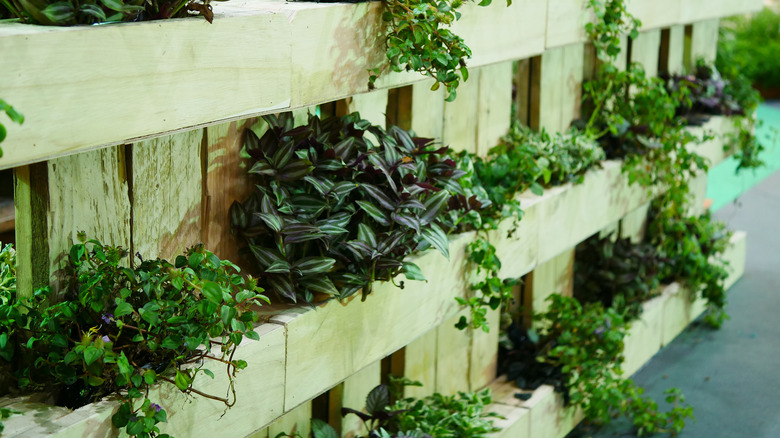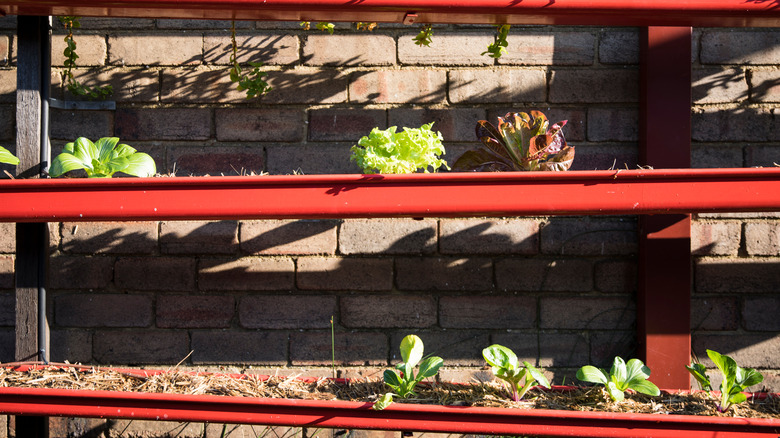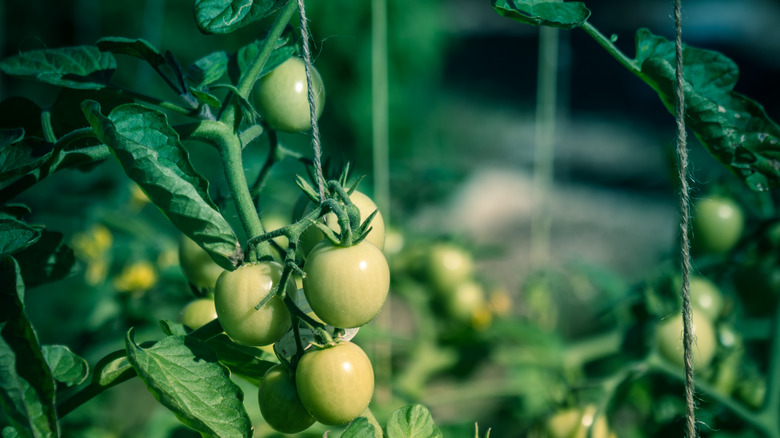Why Vertical Allotments Are The Perfect Gardening Solution For Those With Small Backyards
You do not need a large yard to grow your own fresh food and beautiful flowers. In fact, you don't need a yard at all, just a wall that gets a few hours of sun. Vertical allotments are similar to container gardens in that plants are grown in planters instead of on the ground. The great thing about this type of allotment is instead of those planters taking up precious square footage with sprawling plants; everything is grown vertically, allowing you to have room to enjoy your limited outdoor space.
Even a small vertical allotment offers benefits beyond just a few fresh veggies. UNC Health Talk says gardening can reduce stress while helping you build the self-esteem that comes with learning a new skill. After completing your gardening tasks for the day, you can sit back and enjoy the beautiful space you have created, further improving your overall sense of wellness.
Benefits of vertical allotments
When space is limited, you may need to get creative to make the most of what you have. Since vertical allotments take up a minimal amount of space, this may be an excellent option to allow you to grow the plants you want while still giving you room to relax. You can save money on your small garden using what you already have or can acquire for free. Small plants like lettuce and radishes can be grown in old gutters attached to the wall, while vining plants like cucumbers can be planted in a small container and trained to grow up a trellis made of string.
One big advantage of growing your plants in a vertical allotment is the lack of weeding. Since your garden will be grown in a container, you do not have to worry about grass creeping in. While you may have to pull the occasional weed planted by a bird or squirrel, you won't have to worry about spending significant time on this otherwise arduous task.
The best plants for vertical allotments
If you want to grow some of your own food, you can grow almost anything in a vertical allotment. Root veggies like garlic and onions can be produced in small containers affixed to a wall, as can green leafy favorites like kale. These veggies also require less sun than fruit-bearing plants, so you can cultivate them on a wall that gets at least four hours a day. Vining plants like tomatoes, cucumbers, and winter squash can be grown on a trellis. These plants require full sun, so select a wall that gets at least eight hours of direct sunlight daily.
For those who want to surround themselves with flowers, these can also be grown vertically. Morning glories and some nasturtium varieties offer stunning blooms on climbing vines throughout the growing season. Impatiens grow beautifully in shady areas, while dwarf zinnias and daisies provide a profuse amount of color in a spot with full sun. Dill, lavender, rosemary, cilantro, and parsley are also perfect for vertical allotments since you get a lot of flavor from a few cuttings.


